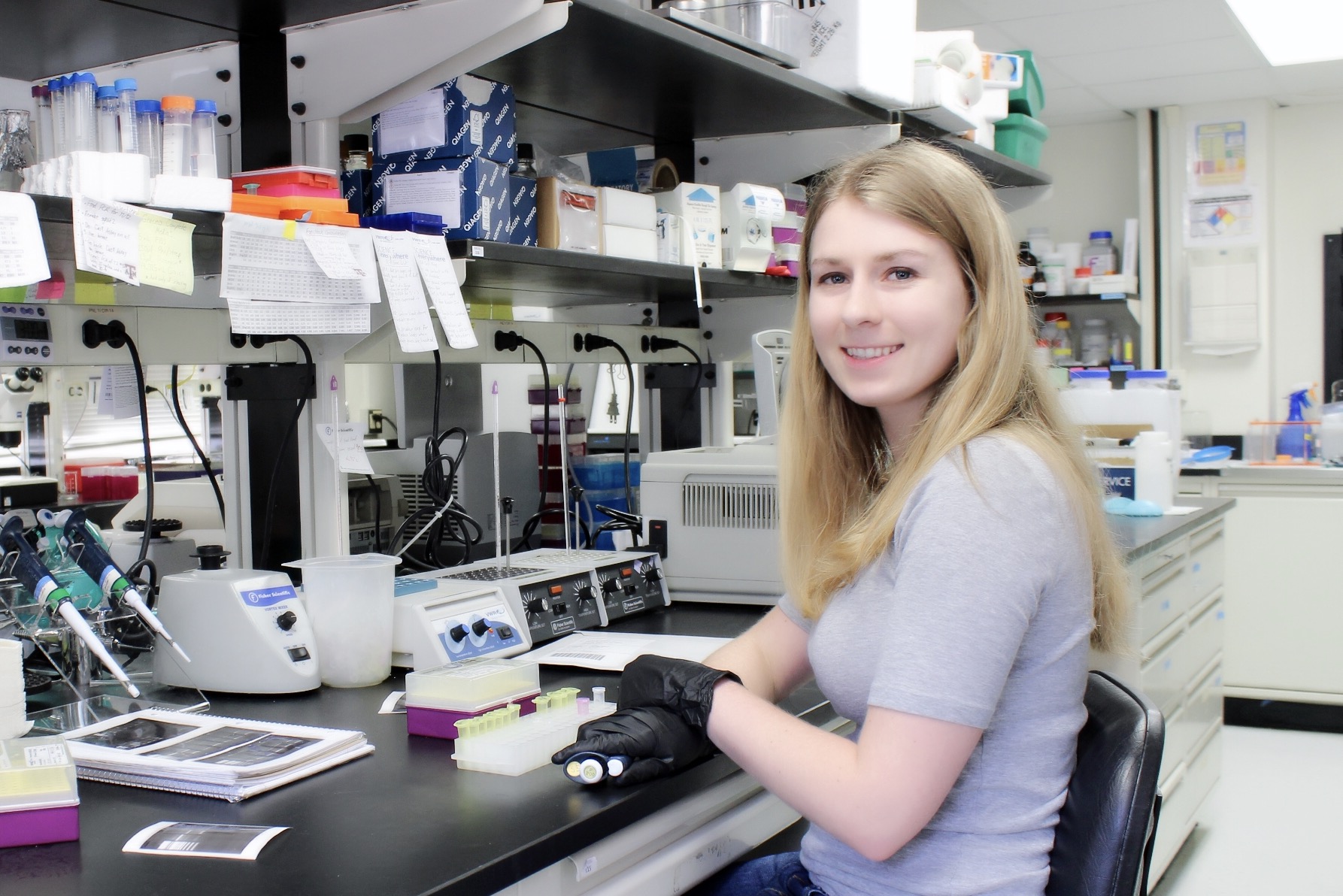
Samantha Iiams
Dr. Christine Merlin Laboratory
Entrance year: 2015
Hometown: Kailua, HI
“I use the migratory monarch butterfly (Danaus plexippus) to study the genetics underlying photoperiodism, the response to seasonal changes in daylengths. Using molecular tools such as CRISPR/Cas9, I’m interested in dissecting the mechanisms behind circadian clock regulation of photoperiodic responses and identifying those clock-controlled, genetic pathways that the monarch uses to modulate its behavior and physiology on a seasonal basis.”
Research Specialties
Animal Genetics
Circadian Biology
Molecular Genetics and Tools
Why did you choose the Genetics PhD program at A&M?
I graduated with my B.S. in Biology here at Texas A&M and really enjoyed my time at the school. The people are friendly, it’s a cute town, and the university has so much to offer in science and research. I saw that the Genetics program had such a diverse range of faculty and research projects to choose from that the opportunity was too good to pass up.
How did the first year of the program help you prepare for your independent research project?
When I first joined the program, I really needed to learn how to be an independent researcher. My first year classes helped me with learning how to interpret and apply knowledge from the literature, the seminar series opened up my mind to new ideas and research I may have otherwise not read about, and my PI spent one on one time with me to teach me the skills necessary for planning and completing experiments.
What is at least one big lesson you have learned in the Genetics graduate program that you think is widely applicable to your future pursuits?
Realizing that failure and hard times are a part of the game and often leads to good things. I’ve had “unexpected” or “failing” results from experiments that turned out to be new discoveries, a paper that was rejected that later on got accepted in a higher journal, and tough committee meetings that have strengthened my ability to defend my research. Learn to roll with the punches!
Most Recent Research Publication:
“Photoperiodic and clock regulation of the vitamin A pathway in the brain mediates seasonal responsiveness in the monarch butterfly”
Fun Facts:
Who was your famous role model growing up?
I always looked up to Steve Irwin. His love and respect for nature as well as his drive to understand the natural world inspired me to pursue a career in science.
What would be your dream job after graduation from the program?
I think I’d like to stay in academia. I’d really love to find a molecular genetics/biology focused post-doc position where I still get to apply cutting-edge techniques like CRISPR/Cas9.
What is your favorite thing about life in College Station?
This seemingly quiet, little town has a lot going on with visits from celebrities like Kevin Hart, Lady Gaga, and 50 Cent to as high a level as former presidents of the United States. You really never know who you may see or meet while living here.
Do you have any pets? If so, please tell us about them.
Yes, I have a horse named Margo! She is a rescue mustang from Colorado. I also have several guppies and a betta fish.

